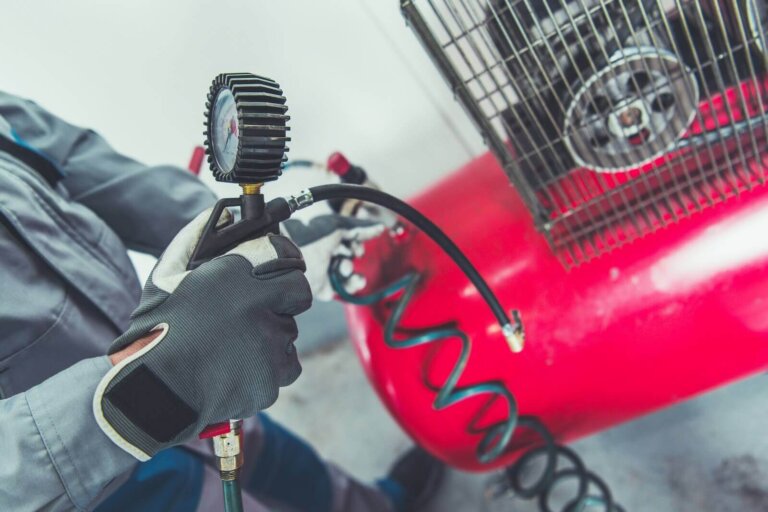When choosing a maintenance strategy for a given piece of equipment, it may be tempting to go with either the most effective or the least expensive option.
Choosing the right maintenance strategy can be a challenging process. You need to consider many factors such as value of equipment and cost of any failure. The main two factors to consider are the cost of equipment failure and the ease of monitoring the equipment. Both will form the basis of your maintenance strategy for each piece of equipment.
Cost of equipment failure
It is the impact that a failure will have in your business. One of the costs associated with equipment failure is equipment downtime. The longer a piece of equipment is down, the more it is going to cost. You also have to consider additional factors such as repair costs, safety, and environmental impacts.
Why does equipment fail?
To avoid equipment failures, it would be helpful to understand why they occur in the first place. Here is a list of some of the most common reasons that a machine fails:
Improper installation or design
Poor installation can be a cause of equipment failure. In a worst-case scenario, these decisions might even pose a safety risk. For example, having an undersized equipment can lead to overworked components and ultimately equipment failure.
Physical damages
External factors such as environmental conditions can also cause physical damage to equipment that can result in rusting, corrosion, thermal fluctuations, and erosion.
Insufficient maintenance
Following manufacturers’ advice can prolong the life cycle of a machine. Some examples of these are regular oil changes and cleaning tasks.
Overworking equipment
If you overwork the equipment and go beyond its limits, they can break easily. Mishandling individual components can cause even more damage to the bigger subsystem.
Misusing equipment
Most machines are designed to perform specific tasks. If these are used incorrectly, their parts can break more easily. These issues can be resolved by following detailed procedures and proper training.
Ease of monitoring
The second factor to consider when defining your maintenance strategy is the ease of monitoring. If the cost of monitoring a given asset is higher than that of the failure mode it prevents, it may not be worth implementing. For instance, if it would cost too much to install sensors on a piece of equipment, you might be better use a schedule-based preventive maintenance plan.
Factors for a successful maintenance strategy
Let’s check some factors to consider before designing and implementing a successful maintenance strategy.
Have a tailored maintenance strategy
The maintenance strategy must be unique for each company. This implies that you must consider all the relevant factors of the issue before designing and implementing a strategy. These factors should include company needs and characteristics
The strategy must follow certain steps
The following issues should be included in the strategy:
Vision and mission of the company: The strategy should be based on the vision and mission of the company.
Strategic objectives of the company: With regards to the maintenance strategy, it is essential to consider not only the overall strategic objectives of the company, but also the production objectives, which are essential for a successful plan of action.
Maintenance strategic objectives: The strategic objectives of the production department must be considered, and the objectives must reflect effectiveness.
Link strategic objectives to strategic performance indicators: Performance indicators are measured to assess achievement regarding strategic objectives. Stakeholders, such as the production department and owners, should be involved in selecting these performance indicators.
Carry out a global gap analysis: Address current or potential gaps in your maintenance performance to identify the factors that can influence the shortfall between current and target levels.
Perform a Strengths, Weaknesses, Opportunities and Threats Analysis (SWOT): Address the deficiencies regarding to the factors considered strategic for the development of a successful maintenance strategy. From the results of the SWOT analysis, make a list of actions to take.
Determine a strategic development plan: This plan can be configured by prioritizing the actions identified from the SWOT analysis.
Formulate the maintenance strategy: After the strategic development plan is in place, you can formulate the maintenance strategy.
Maintenance strategy selection
The maintenance strategy should be selected according to production and business activities. This means that you need to understand how the maintenance strategy will affect the dynamic of the production process because production and maintenance objectives are deeply connected. The production and maintenance objectives must also be compatible with the general company’s objectives in order to choose the appropriate maintenance strategy that suits your business and assets.
A maintenance strategy work as a road map
A maintenance strategy should function as a roadmap that allows and includes alternatives. It should remain flexible so that it can change according to the business situation. The roadmap can be created based on the benchmarking analysis and observations.
To formulate a maintenance strategy and develop a maintenance plan, the following questions must be answered.
What are the most important elements or critical assets?
What are the legal requirements that should be considered?
When all the work has to be done to avoid production lost?
How often should surveys, inspections, work and tests be done?
Where does the money come from?
A model for formulating a maintenance strategy
Maintenance should be viewed as a partner within the company, with the shared goal of producing and selling products with an acceptable profit margin. To achieve this, you an your team should understand that all functions within the company contribute to profitability. Therefore, the maintenance function must be aligned with the general business objectives. Before developing or selecting a maintenance strategy, you should see what need to be changed. Within the maintenance philosophy, change must be embraced as a relevant step. The maintenance strategy process begins with the maintenance philosophy statement, which establishes the role of the maintenance function within the company and the recommended approach to how to fulfil it.
The next step is to acknowledge the objectives of the maintenance function. The objectives can be at the corporate, production and maintenance level, and must be connected with the production process.
The third step is to evaluate maintenance practices and issues. After the initial assessment, used to develop a maintenance program, you should integrate existing practices with new ones.
The last step is to determine the installation plan.
Other reported factors to consider are:
- Condition or nature of the assets or the plant;
- Age of the asset;
- Failure rate;
- Each unit of machinery or installation;
- Cost reduction or effectiveness;
- Work environment and safety;
- Criticality of the asset and the type of machinery to be maintained.
What are the main types of maintenance strategies?
Equipment failure is always a possibility. While a machine is not expected to run forever, we want to at least prolong and maximize its life cycle. A maintenance strategy drives the plans on how an asset can keep running.
These are the main types of maintenance:
Reactive maintenance
Reactive maintenance is the simplest and most intuitive form of maintenance. It is very simple; if something breaks, then the maintenance team works to get it back into service. In many scenarios reactive maintenance really makes sense. However, in some cases it could be catastrophic.
Proactive maintenance
Proactive maintenance is a maintenance philosophy that aims to avoid failure by addressing conditions before a failure occurs.
Certainly, there are many different approaches that one can take when carrying out maintenance tasks proactively. Preventive maintenance (PM) is the most common form of proactive maintenance. PM tasks are predominantly performed according to calendar-based or usage-based schedules. A practical example of PM is when changing out your car’s engine oil after a set number of months or miles.
Predictive maintenance (PdM) is perhaps the most advanced form of proactive maintenance available in practice. PdM employs the use of sensors to track an asset’s condition in real-time. With additional performance data available, maintenance activities are recommended precisely when needed.
Condition-based maintenance (CBM) works with the same principle as predictive maintenance, but not with the same level of technology. CBM also uses sensors to assess the condition of an asset. However, the analysis and decision to perform maintenance work mostly lie in the evaluation of a trained operator.
Reliability-centered maintenance (RCM)
In the traditional sense, the main types of maintenance would have stopped at either being reactive and proactive. In reality, whether purposely or not, you would employ more than one maintenance strategy to cover the whole range of equipment and appliances
RCM gives you the freedom to assign maintenance strategies to maximize reliability while optimizing resources. Assigning assets to different types of maintenance becomes a data-driven solution rather than a limitation. Furthermore, RCM does not stop at whether an asset should be maintained reactively or proactively. RCM tries to find the most suitable type of proactive maintenance while planning for the potential for reactive corrections.
Conclusion
In summary, the type of maintenance strategy selected should depend on the nature of the machinery, the availability of spare parts, the size and nature of the organization, the available technology, and the organization’s maintenance policy.







